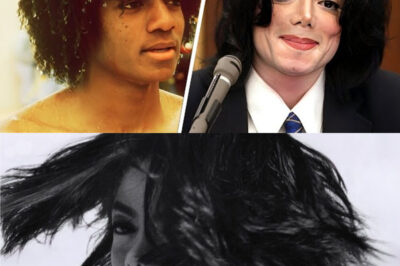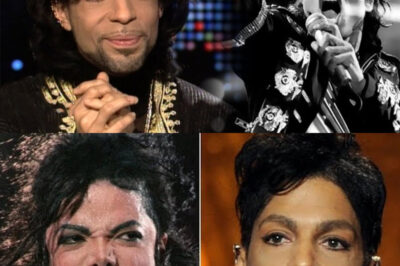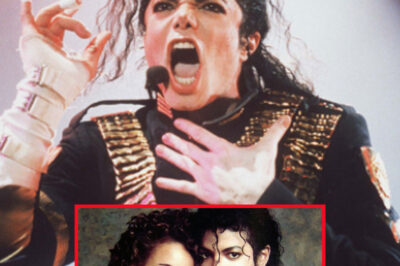When it comes to pop music performance, few names carry the weight and legend of Michael Jackson. Known not only for his groundbreaking music but for his jaw-dropping choreography, Jackson set a standard so high that even his most seasoned backup dancers struggled to keep up.
From his explosive moves in “Jam”, to the sharp martial arts-infused power of “Dangerous”, to the fluid, intricate formations in “Ghosts”, Michael’s routines weren’t just dance—they were superhuman feats of musical embodiment. Let’s dive into five of his most iconic performances that pushed the boundaries of what’s physically possible on stage.

Routine #1: “Jam” – The Relentless Opener
“Jam,” the opening track from Jackson’s 1991 album Dangerous, is a high-energy anthem combining pop, rock, and hip-hop. Its lyrics speak of unity and the power of music—but on stage, it became something else entirely: a dance war zone.
Jackson premiered this routine during his Dangerous World Tour (1992–1993), as well as at the 1993 Super Bowl Halftime Show. The choreography was explosive, athletic, and relentless—blending street dance with complex formations, sharp turns, and high-speed footwork. Fireworks burst in sync with movements, and each step had to be perfectly timed.
His backup dancers—some of the best in the business—admitted “Jam” was one of the hardest routines they had ever learned. Why? Because it wasn’t just a dance—it was a full-body workout performed at breakneck speed, with zero room for error. The coordination required was staggering, and the sheer number of steps demanded technical mastery and stamina. Dancers weren’t just expected to move; they had to keep pace with Michael Jackson—no small task.
Routine #2: “Dangerous” – Controlled Chaos
The Dangerous title track brought together themes of temptation and emotional complexity, wrapped in a fast-paced, electronic rhythm. But what truly set the live version apart was the dance: a perfect fusion of street dance, martial arts, and fluid motion.
One of the most legendary performances of “Dangerous” was at the 1993 American Music Awards, later remixed for the 1995 MTV VMAs. The routine was sharp, deliberate, and filled with high-impact moves. Jackson would move from intense, hard-hitting gestures to smooth isolations and freezes in an instant—something only possible through intense training.
What made this routine particularly brutal was its live execution. There were no second takes, no editing. Every twist, every pause, every power move had to be executed with precision. Jackson was known for his perfectionism, drilling routines so thoroughly that they became second nature. As he once said, “You practice until you no longer have to think. It becomes part of you.”
The “Dangerous” routine ran over five minutes of near-constant movement—and yet, by the end, Michael hardly looked like he’d broken a sweat.
Routine #3: “Remember the Time” – Egyptian Elegance
A throwback to love and memory, “Remember the Time” stood out not only for its smooth R&B-pop blend but also for its lavish music video, set in ancient Egypt. The choreography drew on Egyptian hieroglyphic-style poses, flowing gestures, and symbolic movement. It was elegant—but deceivingly difficult.

Jackson experimented with the routine during rehearsals for the Dangerous Tour, but he ultimately chose not to perform it live. Some speculate it was because of the routine’s complexity. There’s also a long-standing rumor that he feigned an injury before the 1993 Soul Train Awards to avoid performing it live, opting instead to sit on a throne while using crutches.
Whether due to technical demands or personal doubt, it’s clear “Remember the Time” presented a challenge even to the King of Pop. The choreography required total body control, synchronization, and an almost ballet-like grace—something hard to pull off mid-tour under pressure.
Routine #4: “Scream” – A Sibling Showdown
“Scream,” released in 1995, was a fiery duet between Michael and his sister Janet Jackson. It expressed their mutual frustration with media intrusion and fame. The accompanying choreography was a raw, energetic dance battle between siblings at the peak of their performance powers.
The breakdown in the music video is almost militaristic in its precision—full of synchronized jabs, steps, and aggressive gestures. Even in the studio, it took immense effort for both Jacksons to match each other, move for move.
Though they never performed the routine live together, Michael included “Scream” as the opener for his HIStory World Tour, toning down the complexity but retaining the track’s fierce energy. Janet later paid tribute to her brother after his passing in 2009, performing the original choreography solo at the VMAs—while a digital version of Michael danced behind her.
The precision of “Scream” made it one of Jackson’s most difficult routines. A split-second mistake would throw off the entire formation. Dancers had to shift from aggressive hits to fluid slides almost instantly—making this a physical and mental test.
Routine #5: “Ghosts / 2 Bad” – The Final Frontier
Coming in at number one is perhaps the most difficult routine of all—“2 Bad” from the 1997 short film Ghosts. This piece wasn’t just a performance—it was a cinematic dance opera.
“2 Bad,” originally from Jackson’s HIStory album, is a track about personal power and perseverance. The dance routine takes that message to extreme heights. It blends elements of street dance, horror, pantomime, and hyper-stylized body movements that almost look supernatural. It’s performance art disguised as a music video.
Michael doesn’t just dance—he transforms into a character, a ghostly entity who moves in ways that seem to defy physics. He slides, jerks, spins, and gestures in sync with a massive group of dancers, all portraying ghost-like beings.
The choreography includes unnatural angles, sudden jerks, and haunting isolations. It requires dancers to embody creatures more than humans—while still being perfectly in sync. And all this happens while Jackson moves with unnatural energy and ease.
Even veteran dancers say this routine is nearly impossible to replicate. Why? Because Michael didn’t just dance to the music—he became the music. His every gesture was connected to a beat, a breath, a pulse in the rhythm.
News
New Underground City Found Beneath Giza? Discovery Sparks Agartha Theories (an)
In what may be one of the most groundbreaking—and controversial—discoveries of the century, a team of international researchers claims to…
RARE and Unseen Pictures of Michael Jackson | MJ Forever (an)
Michael Jackson was an iconic figure in the world of music, dance, and entertainment.He was a true legend who captured…
Cardi B Demands Any Talk of Her Working as S.t.r.i.p.p.3.r, Past Gang Ties Be Banned From Assault Trial (an)
Cardi B asked a judge to ban any talk of her past as an exotic dancer or any alleged incidents involving…
“Prince vs. Michael Jackson: What Really Happened?” (an)
In the history of pop music, few names shine brighter than Michael Jackson and Prince. Both revolutionized the industry, redefined…
Angel Reese Drops Shocking 2-Word Comment On Megan The Stallion’s Tiny G-String Photos On Instagram (an)
Angel Reese Drops Shocking 2-Word Comment On Megan The Stallion’s Tiny G-String Photos On Instagram Angel Reese and Megan Thee…
Tatiana Thumbtzen: The Rise, Romance, and Sudden Fall of Michael Jackson’s “The Way You Make Me Feel” Muse (an)
In the whirlwind world of pop superstardom, stories of behind-the-scenes love affairs, broken dreams, and misunderstood intentions often remain hidden….
End of content
No more pages to load












